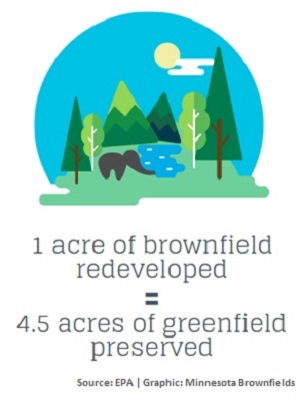How-To ‘Climate Smart’ Brownfield Manual
Read the entire article at Brownfield Listings.
The new Climate Smart Brownfield Manual from U.S. EPA addresses how communities can incorporate climate change adaptation and mitigation strategies into their brownfield revitalization projects. It also explains in plain detail why mitigation and adaptation matter so much to communities beset by brownfields.
While perceptions of brownfields, blighted land and vacant greyfield property as liabilities persist, these oddlots and marginal lands are a resource like any other real property. A brownfield’s underutilization is a function of bad economy, bad planning or bad timing. When idle, the latent utility of brownfield land isn’t destroyed, it’s simply banked.
We can tap the stored potential of the brownfield bank to combat climate change. And we may need all the stored value we can get to rise to the greatest challenge to the natural and built environments of our time. Each and every brownfield redevelopment presents the opportunity to reduce blight and improve the quality of life for vulnerable populations while simultaneously mitigating the impacts of climate change and building up local resilience. In places where available land is scarce, brownfields represents some of the only real estate available to deploy in the local adaptation to climate change.
Brownfields can be used as a land-saving strategy that spares undeveloped greenfield land (often agricultural land, open space or habitat) from the impact of intense development. EPA estimates that every acre of brownfield land redeveloped saves 4.5 acres of greenfield from development. This leaves the carbon stored in these areas in place and their other ecosystem services functions undisturbed.
A community that has numerous brownfields can consider ways brownfields slated for assessment or cleanup can contribute to a livable community that is safer and more vibrant. A brownfield reuse can promote transportation choices such as walking or cycling and better access to public transport. It can also provide accessible green space that improves a community’s livability and sustainability. If a community is affected by frequent or severe flooding, redevelopment could incorporate storm water management and green infrastructure techniques.



